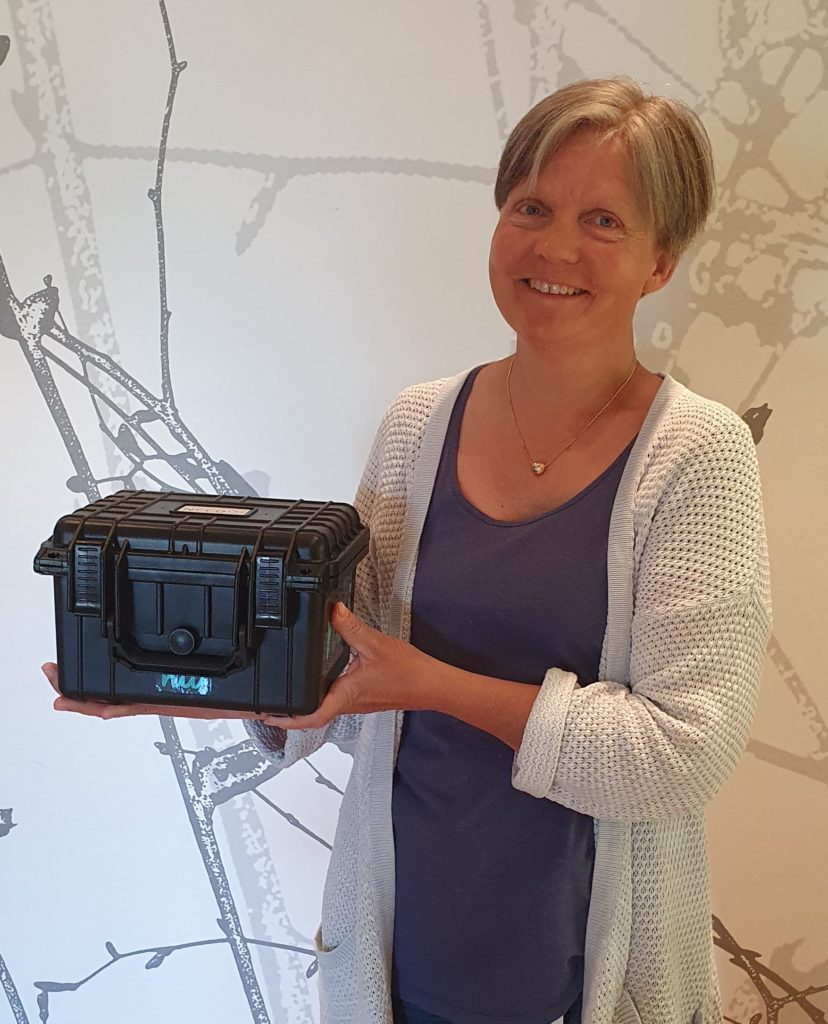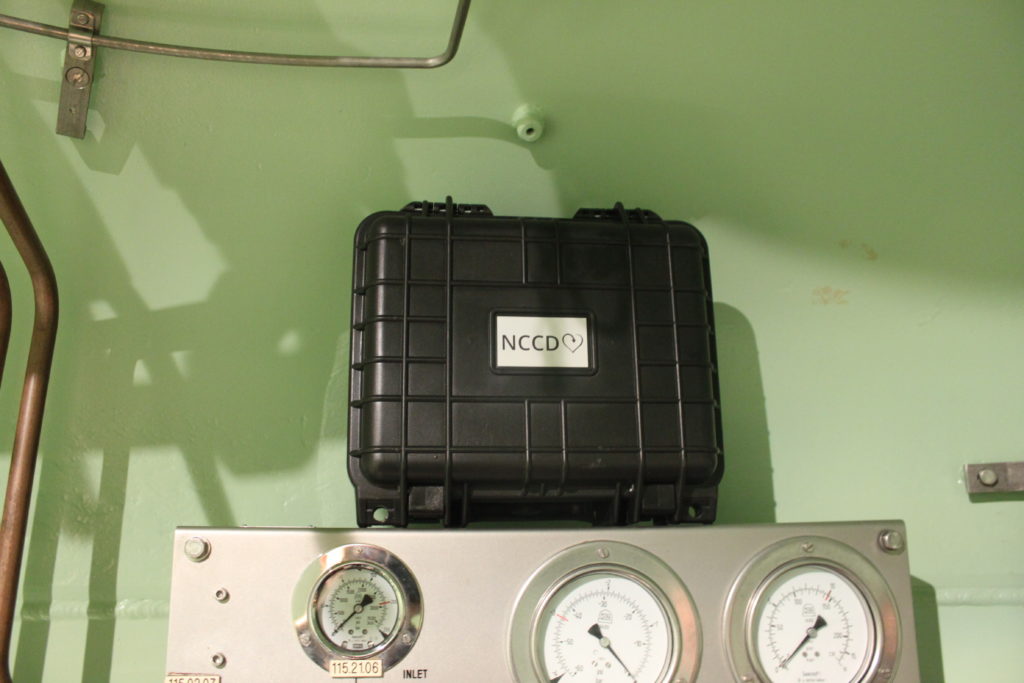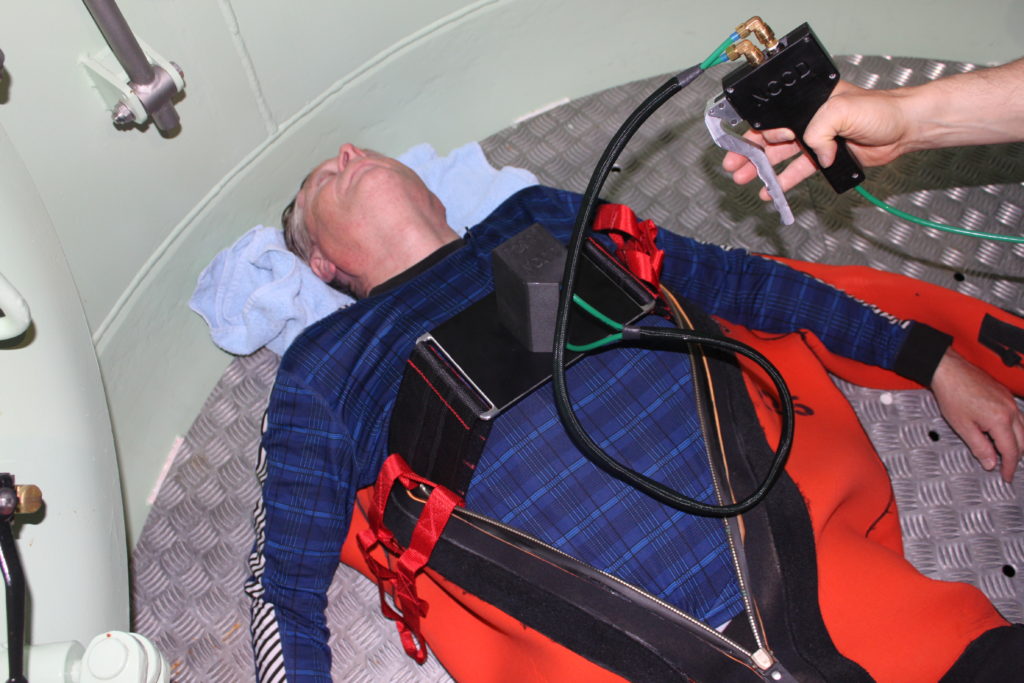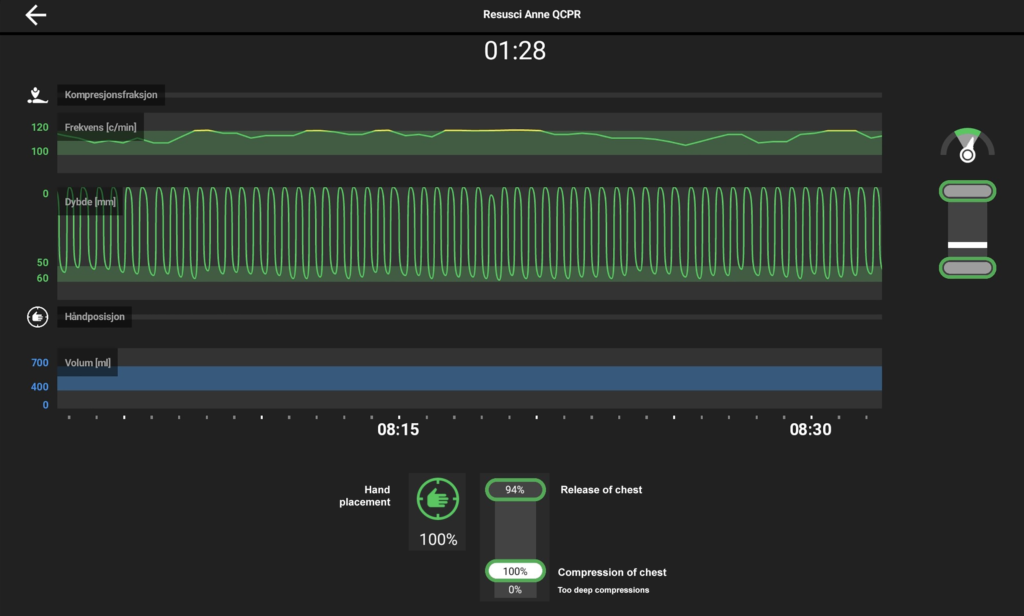NUI Compact Chest Compression Device
A sudden unexpected cardiac arrest (SCD) is a condition in which the heart suddenly stops beating. The immediate cause of SCD’s is usually an abnormal life-threatening heart rhythm where the heart’s electrical activity becomes chaotic. This causes the loss of the heart’s ability to pump blood. SCD’s occur suddenly and often without warning. The main cause for SCD’s are coronary heart diseases. Sudden cardiac arrest is a major global public health issue, accounting for up to 20% of deaths in Western society. Rapid and good cardiopulmonary resuscitation (CPR), combined with a defibrillator (AED) are essential, and improve the chances for survival. Without good CPR after a cardiac arrest, irreversible brain damage will occur after just 5 minutes, and the chance of survival decreases by about 10% per minute from the onset of cardiac arrest without treatment. There is often a lack of both good CPR knowledge and an availability of an AED in the workplace. Statistically, we see that only 10-15% of patients with a cardiac arrest survive.
Saturation divers live and work in small compact compartments, under hyperbaric pressure, using diving bells and hyperbaric chambers. The space in the diving bells and chambers is very limited, and manual CPR is challenging, and in some situations, impossible. There is a need for mechanical chest compressions during CPR in general, as well as in hyperbaric compartments. Recently a subsea contractor lost a sat diver due to cardiac arrest while working on the seabed. It is well known across the industry, that it is very challenging to perform CPR in narrow enclosed compartments such as diving bells.
NUI has developed NCCD, a low cost, small, compact, and lightweight chest compression device that can substitute manual chest compression during CPR. NCCD is designed and tested for use in diving bells and hyperbaric chambers. NCCD is powered by compressed gas already available in the dive system. It contains no electrical parts and has been function tested in a helium atmosphere to a depth of 300 msw. The NCCD (compression unit) will also function while submerged under water. The device is manually controlled by releasing pressurised gas into the compression unit. The user must have good knowledge of manual CPR to be able to use the NCCD, but no special training is required. The device is equipped with carrying straps (red straps) that can be used when transporting the patient for a short distance.
The NCCD has been developed with support from GASSCO, Equinor, Vår Energi, AkerBP, Subsea 7, TechnipFMC and Innovation Norway. For more information: https://www.nui.no/nccd/

Rolf Røssland, Managing Director of NUI



Editorial
Feedback and suggestions for future articles are welcome: [email protected]
Subscribe
Online signup coming soon - in the meantime, please email [email protected]
